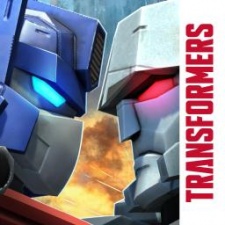Back in June, with the assistance of Hasbro-owned developer and publisher Backflip Studios, London developer Space Ape Games launched Transformers: Earth Wars.
It was the studio's third strategy title in under three years, but in many ways it was also a major departure for the firm.
With Space Ape being headhunted for the project by Transformers owner Hasbro, it was its first game to be based upon an existing IP and published by a separate company.
Furthermore, with a few key changes to the build-and-battle formula to appeal to Transformers fans inexperienced with the genre, it's Space Ape's most accessible game yet.
Now the game's been able to settle into the market for just over a month, we reached out to Space Ape CEO Simon Hade for an in-depth look at the game's development, from conception through to global launch and beyond.
PocketGamer.biz: Can you explain how the relationship between Space Ape and Hasbro/Backflip was established?
Simon Hade: Backflip approached us in late 2014, before we had announced Rival Kingdoms.
They told us they were fans of Samurai Siege and wanted to talk about making a Transformers game that would be similar.
We said that, of course we would love to work together on a Transformers game, but recommended we use Rival Kingdoms as the basis.
With Rival Kingdoms, we built on all the learnings from Samurai Siege and created an engine that would then become the foundation for future games. Rival Kingdoms was also more heroes-focused, and featured a strong collection drive which we knew would be important for Transformers.
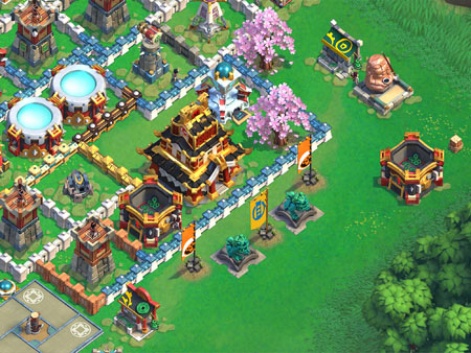
So we got them into the alpha of Rival Kingdoms, which they loved, and agreed on which components of that game would work for the Transformers brand and which would not.
We’ve passed on a few IP deals that made sense from a business perspective, but the passion just wasn’t there.
And when we were all happy that we saw eye to eye on the vision for the game, we decided to move forward.
Our rule for these kinds of partnerships is that we need to be able to staff the team with people for whom it would be a dream come true to work on that IP.
We have a bunch of extremely creative and exceptionally talented game developers and as a general rule, the most talented people in games want to be creating their own IP, not someone else’s.
As a result, we’ve passed on quite a few IP deals that made a lot of sense from a business perspective, but the passion just wasn’t there.
However, for something like Transformers, it was an easy test - Chris (the producer of the game) used to run Botcons in the 90s, and we had more than a few people here for whom it was a dream come true to work on a Transformers game.
Having previously worked on your own IP, how difficult was it to get into the mentality of working with a licence and within existing canon?
While we’ve built our own IP in Samurai Siege and Rival Kingdoms, a lot of us at Space Ape worked together at EA on some of the biggest gaming franchises ranging from FIFA to The Sims and others.
So we had a lot of pattern recognition of things that went well, and things that didn’t work from previous projects.
With Transformers Earth Wars, we wanted to make a game that added to the canon, and was a love letter to fans. Not just because we were fans of the brand ourselves (though that was part of it!) but to make the most of the opportunity.
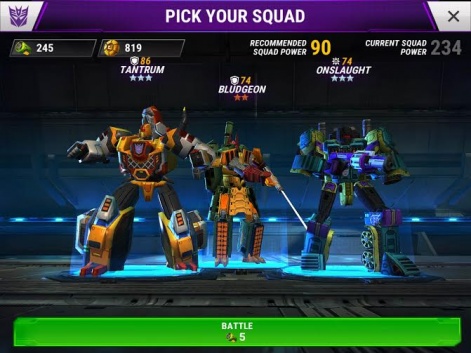
If we made a game that core fans of the brand loved, that would help build buzz around the game and ultimately help us market the game to more casual fans who grew up with the toys but who wouldn’t necessarily appreciate all the little nuances or references we put into the game.
That’s why we decided to work with Simon Furman who was the most acclaimed writer of the Transformers comics, and why we used the original voice actors.
The fiction of Transformers Earth Wars is now in the canon. We didn’t need to do that. Many IP games don’t take that part of job seriously but I think that, especially if you’re working with such a well loved IP, you owe it to the fans to improve and extend the canon.
If you’re working with such a well loved IP, you owe it to the fans to improve and extend the canon.
Also, I should say it was very important to us that we structure the deal in a way that allows us to iterate on the design and react to what we heard from players, and what we discovered as we got deeper into the project.
This is a hard balance to strike commercially because, obviously, the bigger the IP, the more important things become like release windows, quarterly budgets and cross channel coordination (for good reasons!).
We knew from past experiences that if you’re not careful, you can create a working environment that values predictability of the development schedule over making the best game.
The most talented game developers don’t want to work on those kinds of projects, and we don’t want to be that kind of company. So approaching the project with a partnership mindset rather than a dev for hire model was therefore very important for us.
Rival Kingdoms was a great game, but one that failed to chime with a mass market. So was it a simple matter to take what you'd learned from it and apply them to Transformers: Earth Wars?
Let me start by first correcting the perception of the success of Rival Kingdoms.
That game has actually done very well for us. It funded our growth from around 40 people when the game launched to over 100 in Central London, and it gave us the platform to work on four new games.
What a lot of people don’t realise when looking at the grossing charts is that many developers of the top grossing games, particularly in this midcore and strategy genre, need to take every cent that the game makes and spend it on Facebook ads to get more installs, to make more money to spend on Facebook ads and so on.

However, the charts measure top line revenue - not profit. Rival Kingdoms is well outside the top 100 in terms of top line revenue, but we don’t spend a cent on marketing which makes it commercially more successful than many midcore games in the top 30 grossing.
This is because of the focus on community gameplay, events and so on.
In terms of applying the lessons of Rival Kingdoms to Transformers, what we learned is that Rival Kingdoms’ kind of appeal is a double-edged sword.
I’ve spoken a few times at conferences about how the choice to position the game as a core game for serious gamers really limited the game’s potential because it alienated a lot of people.
On the other hand it has been played by over 6 million people (so it chimed with quite a few!) but it did make it difficult for us to market the game via traditional means.
You know exactly what you’re going to get: big robots, tearing things up, and you’re going to want to collect them all.
Most people will give us a few seconds at most to communicate why they should download the game, and if you lead with a dark foreboding castle and mystical dragons, this sends the signal that it is a much more daunting and complex experience than it really is.
With Transformers, we fixed this. If you grew up with the toys, the comics or the TV shows in the 80s you know exactly what you’re going to get: big robots, tearing things up, and you’re going to want to collect them all.
That’s a much easier message to communicate. Because of this promise of the brand, we needed to change some parts of the Rival Kingdoms engine.
Rival Kingdoms is about collection to some extent, but collection is a much bigger focus in Transformers.
Also the community gameplay in Rival Kingdoms is very involved, and we needed to strip a lot of that back for Transformers because we found that a lot of people were downloading the game because it was a Transformers game and had never played a mobile strategy game.
This meant we needed to really simplify things compared to Rival Kingdoms, which was really designed for someone who had logged many hours playing Clash of Clans and games like it.
So I’d say the changes were more about building on the Rival Kingdoms engine to deliver on the promise of the brand rather than fixing any problems with Rival Kingdoms gameplay-wise.
Unlike most strategy games Transformers: Earth Wars is only about the hero characters, no troops or minions, so how did that impact the design process in terms of matching hero characters and their special moves to base defensive units?
This was the riskiest part of the design, and was the first thing we tackled. Our initial hypothesis was actually that we could treat the bots like we treat Ancients in Rival Kingdoms.
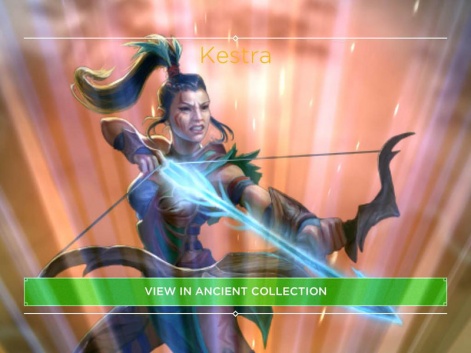
This would have certainly made the game design much easier and more predictable, but we quickly found that it just was not satisfying.
Transformers card battle games have been done, and the response of fans to those games versus games where you have massive robots beating up on each other - there was no comparison. So we had to go 3D characters on canvas, the question was how much control to give people.
When you give full agency, it breaks the golden rule of enabling distracted gaming. People playing mobile games don’t want to give their full attention.
Almost every developer who has worked in this genre has at some point experimented with the idea of giving full agency over the troops. It is there in the origin games on PC like Starcraft and so on.
It is always the number one feature players ask for. But the problem is when you give full agency on this platform, it breaks the golden rule of enabling distracted gaming.
People playing mobile games don’t want to give their full attention. You’re waiting for the bus. Or watching TV. Or waiting in line at Starbucks. Or killing a few minutes before your next conference call.
In all these cases, there needs to be some ambient awareness of what is going on around you and if the game demands your full attention, or punishes you if you look away, then that’s a problem.
The real innovation that Backyard Monsters and Galaxy Life brought to the genre, and Supercell perfected in Clash of Clans, was to take away the second-to-second control of the troops.
Over time, more control has creeped back in the form of abilities or spells and other features that inject strategy into the gameplay, but there is a cognitive load budget that, as a designer, you need to be very cognisant of.
If you give more control in one area, you need to take in another.
This was also a central design thesis for Rival Kingdoms, so we had some cool tools that allowed non-technical game designers to quickly create control schemes, put them in the hands of real players, then tweak them.
We made dozens and dozens of these, and used them to figure out how much control to give over the different classes of bots and figure out what was fun, and what was demanding so much attention that it became overwhelming.
The other complexity was in performance. The bots in this game are higher fidelity than you see in many console games. They are full 3D, and literally transform in the game.
There is no trickery - our 3D modellers make sure that every part goes somewhere just like the toys.
This decision to go with full, immersive, almost console-level production quality had big design implications. You just can’t have hundreds of these things running around on a low-end mobile device, and if you exclude those devices, you limit the opportunity for the game, reduce liquidity and so on.
It’s really important that if you are in a clan and discover our game, that you can go and tell your clan mates and they can play it.
The decision to go with full, immersive, almost console-level production quality had big design implications.
If you restrict the platforms or devices too much, you lose that word of mouth intra-clan virality that is so vital to the game’s success.
Most games now connect the random collection of cards/characters with a fusion process for unwanted cards. Why didn't you take this approach?
We wanted to keep things really simple. The brand attracts people who have never played a strategy game, and who are not well versed in gacha mechanics.
We wanted people to collect the bots and value them, and the idea of fusion is not logical for someone who hasn’t played a lot of card battlers or eastern games.
How long did Transformers: Earth Wars take to develop, and how many people were involved?
We set up the team in January 2015, and the game shipped in the West at the start of June 2016, so 17 months end to end.
Initially it was a small team, around 10 people. At its largest, we had around 25 people working on the game. That was when we were in peak production of the content.
We have over 50 bots in the game and a lot of really high quality art, so nearly half of those people were artists. Now the team is just under 20 people.
We’re still producing a lot of content with a new bot being launched every couple of weeks and new event formats, and we’re also yet to launch in Asia.
Like Rival Kingdoms and Samurai Siege, most of the effort will eventually go towards running events and creating more content to keep the game constantly evolving for core players.
When we’re focussing on content only, and not launching new countries, then the team will probably get a little bit smaller.
The Transformers team is quite a bit bigger than we would usually have on a game with our own IP. The average size of our new game teams is 8, but that’s because the content requirements on those games is much less.
How did the relationship between Space Ape, Hasbro, and Backflip work in terms of the split between different areas of expertise etc?
Hasbro and Backflip chose us because we’re the experts in this genre so we focused on the game design and development.
Hasbro obviously were the guardians of the brand, so had the final say on things like how the characters were presented in the game, lore, story, etc.
They also had a ton of knowledge from every previous Transformers game about what worked and what didn’t. One example was art style.
Initially we were thinking very retro, cel shaded and nostalgic - as it turned out, to a fault. This was based on some testing we had done as well as our own, very fan-focused instincts.
But Hasbro had spent a lot of time re-imagining that style for today, and it was a big focus for their current toy lines.
They had this art style called Generations which, if you are a casual fan of the brand you would likely say was the toys and cartoons you grew up with.
But when you compare it to the actual G1 styles, it is different - more modern, more high tech - and, actually, that was the right call.
It makes the real G1 styles look very dated in comparison, but still captured the essence of what your mind remembers.
They made it clear it would be our call, but ultimately they were right and I’m glad we took their advice. There are a lot of examples like that from the development process.
For marketing the game, we divided responsibilities between Space Ape, Backflip and Hasbro. Hasbro took the lead on brand building initiatives that they have a lot of experience in.
Backflip and Space Ape have a lot of experience in performance marketing so we divided up the channels to play to the different teams’ strengths.
We are running some TV marketing, manage the social channels, run customer support and the VIP programs and analytics because all that is quite genre specific.
We also handled new market entry. For example, in Japan, a different company called Tomy Takara owns the rights to Transformers so we had to handle localisation and launching there differently. We’re currently featured there (as of 15 July).
What was the biggest challenge you overcame during development?
One of the biggest challenges was getting the game performing on many devices. The graphical fidelity of the game surpases some console games.
One of the biggest challenges was getting the game performing on many devices.
There is nothing else like it on mobile, and this was our first project in full 3D as a company. Solving this touched everything from the design of the game to tech, and it was very challenging.
The game was in soft launch for a considerable time, so what did you change during this period?
The beta was mostly about tuning content - figuring out how many bots we needed for the gacha business model to work, figuring out the right early user experience, and this included how we market the game.
We added alliances during the beta and introduced a feature that gated use of bots, as we found people were not exploring the full range of abilities and strategies on offer.
There were also a ton of performance improvements, but for the most part the game we went into beta with was the game we shipped.
When did you finally think you had come up with a game you were happy with?
Once we hit about 40 bots in the game. We knew having a lot of bots would be key, but there is no textbook that tells you how many you need.
Talk to an expert in Asian gacha models and they’ll say you need 300 pieces of content for the model to work, but other western games with similar economies were getting it done with dozens of characters so we just had to experiment.
When we first launched, there were only 20 bots in the game and people burned through them fast.
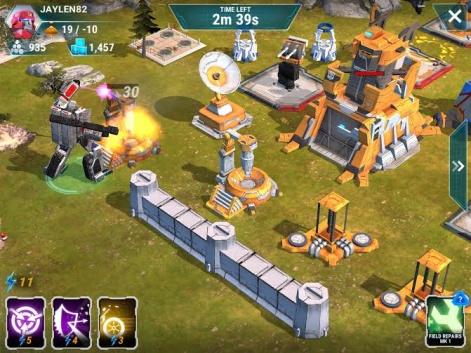
This meant that the game got quite boring because the whole reason to play is to explore and unlock more bots and level them up, and many people didn’t have their favourite bots in the game, strategies were limited, etc.
But once we hit 40, then everything started to work, people started playing more, and the review scores went up.
Now we have over 50 and are adding several new bots every month through in game events - so we were not happy until we were satisfied we could keep up that pace.
There were other changes that went in then, too, particularly to improve performance, but once we saw that we knew we were onto a winner. That was about two months prior to launch.
You've clearly spent a lot of time on the tutorial aspects of the game. Why did you think this was necessary?
Believe it or not, there are people out there who have never played one of these kinds of games before.
It blows my mind, actually, because we have been living and breathing this genre for three years now, but when we put early versions of this game in front of Transformers fans, there were many that didn’t have any idea what to do.
We had to rethink everything we’d learned with Rival Kingdoms. In that game, we were catering to people who would churn out if we started to explain to them how resources worked, or why you would want to do a PvP battle.
But for someone who was new to the genre, those components were really confusing.
In an ideal world, we’d have a way of profiling someone when they download the game and if they’ve logged 50 hours on mobile strategy games we’d give them one experience, and if they had never played a strategy game we’d give them another.
But the world doesn’t work like that, so we just had to spend a lot of time tuning it and running A/B tests until we struck the right balance.
You've previously spoken about your intention to attract Transformers fans who aren't au fait with the mobile strategy genre. From early reactions, do you think you've achieved this?
Absolutely. You just need to check out the comments on the App Store.
So many people are playing just to collect their favourite toys from their childhood. It’s amazing. We also spent a lot of time getting people into the office and just watched them play.
I think we’ve expanded the pie for this genre, for sure.
One way you see this play out is in stats. Typically someone who has played a lot of these games has a particular play pattern.
They buy their extra builder early. They join a ready-made alliance, usually because it is made up of friends they met in a previous game. As a result, they retain and monetize better, but also are less patient about deviations from the formula.
People who are less familiar with the genre, on the other hand, take longer to convert to spender, they need more help finding the right alliance and take longer to ramp up.
We see this divergence in the stats, and it particularly comes through in marketing channels.
Someone who downloaded the game from the big featuring banner on the App Store is more likely to be unfamiliar with the genre than someone who finds the game through an ad on Facebook, or through a friend recommendation for example.
Can you share any early retention numbers/other KPIs?
I can’t share specific numbers but can say that overall they are very high. It’s particularly important for us to see that long term retention is considerably higher than our other games.
We are also seeing a much higher “organic” effect - meaning people who discover the game through its high chart position, word of mouth, etc. which is an indication that it will continue to grow, and have a longer tail than Rival Kingdoms which grew primarily from word of mouth and clan on clan recruitment.
Samurai Siege proved very popular in Japan, so what are your plans to bring to Transformers: Earth Wars to the key Asian markets such as Japan, Korea and China?
We held back Japan, Korea, China, Taiwan and Hong Kong from the launch in June. This is because we know from experience that those markets require special focus.
In Japan, we are working with Tomy Takara who own the rights to Transformers there, and we’re currently featured on the homepage of both app stores.
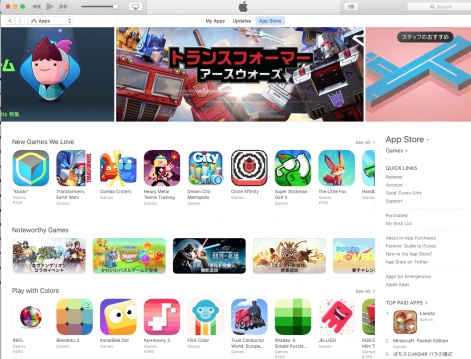
The history is that Tomy amalgamated various toy lines in the 80s and packaged them up, then Hasbro bought the rights to the West and built the brand around the comic books and TV series.
But, to this day, Tomy still owns the rights in Japan and are still involved in the manufacture and design of the toys. They are the best in the world at engineering these transforming toys.
It’s particularly important for us to see that long term retention is considerably higher than our other games.
We followed a similar playbook to the West in enlisting the original voice talent who dubbed the voices from the West (the same voice actor also does Arnold Schwarzenegger; he is quite well known).
Korea, Taiwan and Hong Kong will follow after Japan and we’ll self-publish there. For mainland China, it is more complicated and we’re currently searching for the right local partner to publish the game there.
The brand is huge in China and there is huge opportunity there. It is our second biggest market for Rival Kingdoms, so we know a lot about it, but that also means we know where we need help so hopefully we’ll have more to announce on that front soon.
What's next for Transformers: Earth Wars?
We are in the process of getting players used to events.
This is a core part of Samurai Siege and Rival Kingdoms, but with a more casual player base, and many people who have never played a game in this genre, we’re introducing them slowly.
We’ve held a couple of events now where players are given certain objectives on a weekend, and we’ll be extending that to alliance-based events and some competitive leaderboard events soon.
We will also be introducing additional features to the game which are in line with Hasbro’s plans for the franchise.
We are confident these new features will really excite both the Transformers fans and the midcore gamers. We will be releasing more details in the coming weeks, so stay tuned!

